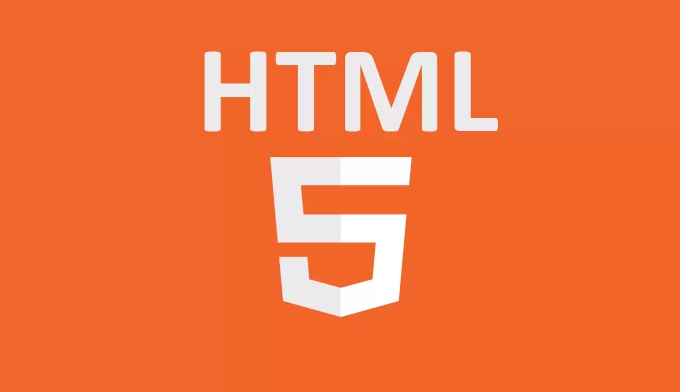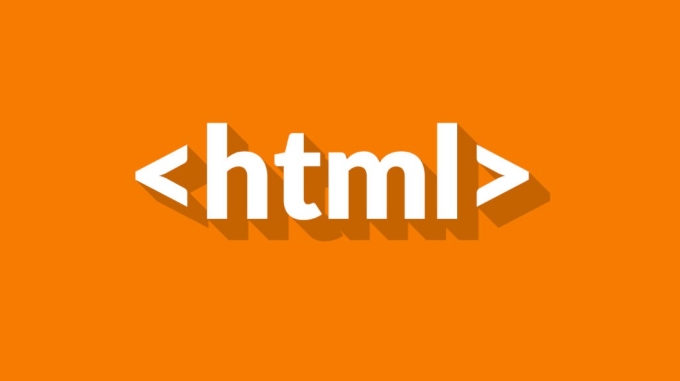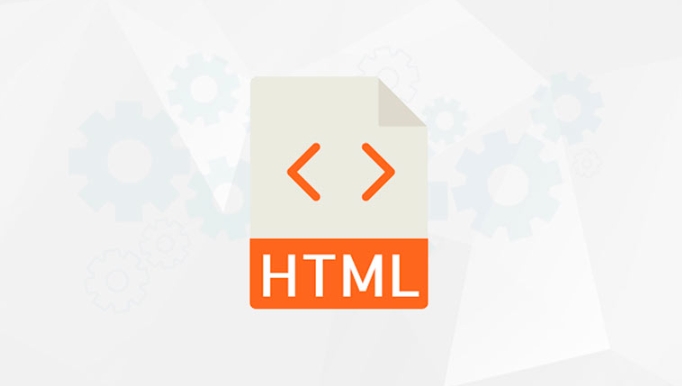The garbled code on the web page may be a character set error. The role of the character set is to tell the browser which way to decode the web page content. If the settings are wrong, it will cause garbled code and affect SEO and user experience. HTML5 recommends adding <meta charset="UTF-8"> to
to set the character set, and should be placed near the beginning of the document. Old websites may use GBK encoding, but they are no longer recommended. Incorrect character set settings may cause Chinese to display as question marks or garbled codes, and search engines may not recognize the content. The server side also needs to set a character set, such as the Content-Type field in the HTTP header, which is more important in dynamic pages. The HTML file storage encoding must be consistent with the declaration, otherwise an error may still occur. UTF-8 is recommended when it comes to multilingual content. You can check the character set settings with tools such as W3C Validator. Only by ensuring that HTML, server and file storage are coding consistently can most garbled problems be avoided.
Web page displays garbled code? Maybe the character set is not clear. The role of character sets in HTML is actually to tell the browser how to decode web page content. Common UTF-8 can cover almost all language characters. If the settings are correct, Chinese, English, and emojis can be displayed normally; if the settings are wrong, the garbled code will be at the least, and the SEO and user experience will be affected.

How to set a character set in HTML?
In the HTML5 standard, the most recommended method is to add this line of meta tag in :
<meta charset="UTF-8">
This tag must be placed near the beginning of the document, the earlier the better, to avoid character parsing errors during the loading process of the browser. Some old websites are still using:

<meta http-equiv="Content-Type" content="text/html; charset=GBK">
Although this writing method can also take effect, it is not necessary unless you really only need to support the old system that supports Chinese GB2312 or GBK encoding.
What problems will occur if the character set is wrong?
The most intuitive thing is that the content of the web page becomes garbled. For example, web pages actually use UTF-8 encoding, but the meta declares ISO-8859-1, so the browser may display Chinese as a bunch of question marks or garbled characters. Sometimes, users can see the correct content manually by "switching encoding" in the browser, but this is too complicated for ordinary users.

In addition, if the content cannot be identified when search engines crawl, it may also affect the inclusion and ranking. If your web page content is OK but your search ranking is not up, don't forget to check whether the character set is set correctly.
Do I need to set the character set on the server side?
Yes, just writing meta in HTML is not enough. The HTTP header returned by the server should also include character set information, such as:
Content-Type: text/html; charset=UTF-8
In this way, the browser can know which encoding method to parse before loading HTML. Especially when dynamically generating pages (such as PHP, Node.js), server-side settings are particularly important. Some CMS systems do not set encoding by default, resulting in inconsistent settings of the front-end and back-end, which is prone to problems.
Some details that are easy to ignore
- The saving encoding of the HTML file itself must be consistent with the declaration : for example, if you write UTF-8 in HTML, but the file is saved as GBK, there may still be an error when the browser parses it.
- Compatibility of different languages : If the web page only displays English, it can also be done with ISO-8859-1, but once it involves multilingual content such as Chinese, Japanese, Russian, etc., UTF-8 is almost the only choice.
- Verify encoding using online tools : You can use some online HTML verification tools (such as W3C Validator) to check whether the character set of the web page is set correctly.
Basically that's it. Character set settings don't seem complicated, but they can easily be ignored, especially when multi-person collaborative development or migration from old projects. Confirm that the encoding between HTML, server and file storage is consistent, and most garbled problems can be avoided.
The above is the detailed content of Understanding Character Sets in HTML. For more information, please follow other related articles on the PHP Chinese website!

Hot AI Tools

Undress AI Tool
Undress images for free

Undresser.AI Undress
AI-powered app for creating realistic nude photos

AI Clothes Remover
Online AI tool for removing clothes from photos.

Clothoff.io
AI clothes remover

Video Face Swap
Swap faces in any video effortlessly with our completely free AI face swap tool!

Hot Article

Hot Tools

Notepad++7.3.1
Easy-to-use and free code editor

SublimeText3 Chinese version
Chinese version, very easy to use

Zend Studio 13.0.1
Powerful PHP integrated development environment

Dreamweaver CS6
Visual web development tools

SublimeText3 Mac version
God-level code editing software (SublimeText3)

Hot Topics
 Applying Semantic Structure with article, section, and aside in HTML
Jul 05, 2025 am 02:03 AM
Applying Semantic Structure with article, section, and aside in HTML
Jul 05, 2025 am 02:03 AM
The rational use of semantic tags in HTML can improve page structure clarity, accessibility and SEO effects. 1. Used for independent content blocks, such as blog posts or comments, it must be self-contained; 2. Used for classification related content, usually including titles, and is suitable for different modules of the page; 3. Used for auxiliary information related to the main content but not core, such as sidebar recommendations or author profiles. In actual development, labels should be combined and other, avoid excessive nesting, keep the structure simple, and verify the rationality of the structure through developer tools.
 What are the essential HTML elements for structuring a webpage?
Jul 03, 2025 am 02:34 AM
What are the essential HTML elements for structuring a webpage?
Jul 03, 2025 am 02:34 AM
The web page structure needs to be supported by core HTML elements. 1. The overall structure of the page is composed of , , which is the root element, which stores meta information and displays the content; 2. The content organization relies on title (-), paragraph () and block tags (such as ,) to improve organizational structure and SEO; 3. Navigation is implemented through and implemented, commonly used organizations are linked and supplemented with aria-current attribute to enhance accessibility; 4. Form interaction involves , , and , to ensure the complete user input and submission functions. Proper use of these elements can improve page clarity, maintenance and search engine optimization.
 Implementing client-side form validation using HTML attributes.
Jul 03, 2025 am 02:31 AM
Implementing client-side form validation using HTML attributes.
Jul 03, 2025 am 02:31 AM
Client-sideformvalidationcanbedonewithoutJavaScriptbyusingHTMLattributes.1)Userequiredtoenforcemandatoryfields.2)ValidateemailsandURLswithtypeattributeslikeemailorurl,orusepatternwithregexforcustomformats.3)Limitvaluesusingmin,max,minlength,andmaxlen
 How to group options within a select dropdown using html?
Jul 04, 2025 am 03:16 AM
How to group options within a select dropdown using html?
Jul 04, 2025 am 03:16 AM
Use tags in HTML to group options in the drop-down menu. The specific method is to wrap a group of elements and define the group name through the label attribute, such as: 1. Contains options such as apples, bananas, oranges, etc.; 2. Contains options such as carrots, broccoli, etc.; 3. Each is an independent group, and the options within the group are automatically indented. Notes include: ① No nesting is supported; ② The entire group can be disabled through the disabled attribute; ③ The style is restricted and needs to be beautified in combination with CSS or third-party libraries; plug-ins such as Select2 can be used to enhance functions.
 Implementing Clickable Buttons Using the HTML button Element
Jul 07, 2025 am 02:31 AM
Implementing Clickable Buttons Using the HTML button Element
Jul 07, 2025 am 02:31 AM
To use HTML button elements to achieve clickable buttons, you must first master its basic usage and common precautions. 1. Create buttons with tags and define behaviors through type attributes (such as button, submit, reset), which is submitted by default; 2. Add interactive functions through JavaScript, which can be written inline or bind event listeners through ID to improve maintenance; 3. Use CSS to customize styles, including background color, border, rounded corners and hover/active status effects to enhance user experience; 4. Pay attention to common problems: make sure that the disabled attribute is not enabled, JS events are correctly bound, layout occlusion, and use the help of developer tools to troubleshoot exceptions. Master this
 Configuring Document Metadata Within the HTML head Element
Jul 09, 2025 am 02:30 AM
Configuring Document Metadata Within the HTML head Element
Jul 09, 2025 am 02:30 AM
Metadata in HTMLhead is crucial for SEO, social sharing, and browser behavior. 1. Set the page title and description, use and keep it concise and unique; 2. Add OpenGraph and Twitter card information to optimize social sharing effects, pay attention to the image size and use debugging tools to test; 3. Define the character set and viewport settings to ensure multi-language support is adapted to the mobile terminal; 4. Optional tags such as author copyright, robots control and canonical prevent duplicate content should also be configured reasonably.
 Debugging common HTML validation errors.
Jul 03, 2025 am 02:41 AM
Debugging common HTML validation errors.
Jul 03, 2025 am 02:41 AM
When encountering HTML verification errors, you must first clarify the problem and correct it according to the specifications. 1. When the required attributes are missing, the src and alt and a href of img should be completed; 2. When the tag nesting is incorrect, the structure should be clarified and the tags should be closed correctly to avoid confusion in nesting block-level elements; 3. When using invalid or discarded tags, you should refer to the MDN document to replace it with modern writing methods, such as replacing center and font with CSS; 4. When character encoding problems, add metacharset="UTF-8" and ensure that the file is saved in UTF-8 format to solve it.
 How to associate captions with images or media using the html figure and figcaption elements?
Jul 07, 2025 am 02:30 AM
How to associate captions with images or media using the html figure and figcaption elements?
Jul 07, 2025 am 02:30 AM
Using HTML sums allows for intuitive and semantic clarity to add caption text to images or media. 1. Used to wrap independent media content, such as pictures, videos or code blocks; 2. It is placed as its explanatory text, and can be located above or below the media; 3. They not only improve the clarity of the page structure, but also enhance accessibility and SEO effect; 4. When using it, you should pay attention to avoid abuse, and apply to content that needs to be emphasized and accompanied by description, rather than ordinary decorative pictures; 5. The alt attribute that cannot be ignored, which is different from figcaption; 6. The figcaption is flexible and can be placed at the top or bottom of the figure as needed. Using these two tags correctly helps to build semantic and easy to understand web content.






